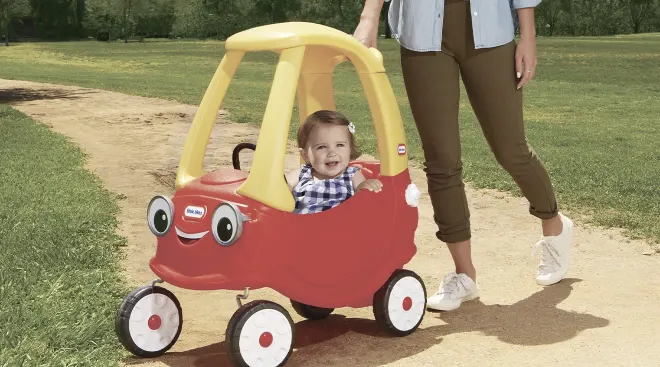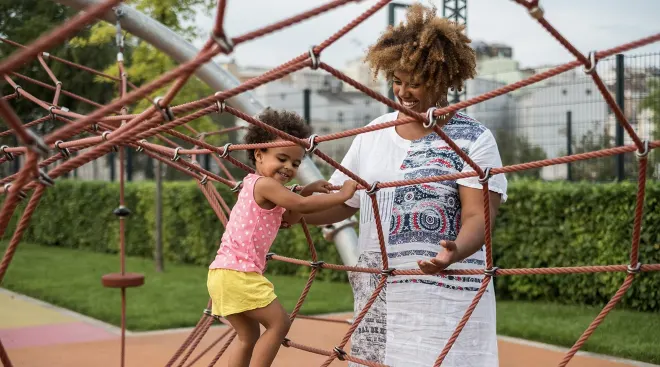6 Reasons the 'Terrible Twos' Are Actually Pretty Terrific
Two-year-olds get a bad rap. Sure, they’re walking, talking, ticking time bombs of fury, but there’s a good reason behind those infamous mood swings and earth-shattering meltdowns. They’re learning and growing and developing every day, but their communication skills may still be lacking. They know what they want, but they can’t adequately express themselves—or they’re unsure how to cope with the wild emotions that come with life’s daily ups and downs. The struggle is real.
Of course, there’s no denying that the “terrible twos” are a thing. Believe me, I’ve lived this frustrating phase with all three of my kiddos—and I can tell you from firsthand experience, those little critters can be ruthless and irrational and completely exasperating. But with time and reflection, I’ve realized that my feisty kiddos were just doing their best to navigate the choppy waters of growing into little people with big feelings and strong opinions. Seeing the world through a 2-year-old’s little eyes is a game-changer, so maybe it’s time we flip the narrative. Here are a few reasons I think the “terrible twos” are actually pretty terrific.
Your kid may be having an epic meltdown, but it’s generally a short-lived event. Toddlers live in the moment, and they’ll snap out of it quickly. A simple distraction tactic can take them from a level-10 terror to happy, go-lucky tot in a matter of seconds. A hysterical crying fit can transition to hysterical laughter at the mere mention of a playground trip or question about what they’d like for a snack. Unlike big kids or adults, toddlers generally don’t hold grudges. They move on with life and let bygones be bygones. In the wake of a fit, you might be left feeling depleted, but they’ll be completely nonplussed.
I remember the first time my 2-year-old insisted on dressing herself in the morning. Of course, she couldn’t really get her arms into the sleeves, but she could willfully pluck the desired articles off her Montessori-style shelves. Red leggings, green blouse and glitter combat boots, topped off with a hot-pink JoJo Siwa hair bow. It was a look to say the least—but, unfortunately, one that wasn’t appropriate for a formal family function. I tried hard to convince her to change, but she put her glistening foot down. This was the start of her opinionated stage—and, for the record, six years later, we’re still in the thick of it. The girl knows what she likes, what she wants and how to express her needs. Sure, it can be frustrating when her stubbornness shines through, but it can also be pretty affirming that maybe—just maybe—I’m doing something right. She’s not afraid to march to the beat of her own drum, stand up for her beliefs and choices and voice her opinion. (Heck, I am doing something right!)
I’m often told that my youngest daughter is the sweetest little lovebug at daycare. She does as she’s told, openly shares, cleans up efficiently and never gives the teacher a hard time. At home, on the other hand, she’s a little tyrant in training. She pushes back when I ask her to do anything chore-related, she yells at me for even suggesting she should wear a coat in winter and she gleefully steals from her brother and sister.
While I could feel a pang of jealousy toward her teacher who only sees the saintly side of my daughter, instead, I feel honored that my girl feels comfortable and secure enough to show me the salty, spicy, sour sides of her personality. She loves me so much that she doesn’t have to hide anything: the good, the bad and the slightly sinister. She knows I’ll love her unconditionally in spite of (and because of) everything she is.
Honestly, it’s hard not to relate to and empathize with a toddler that goes from hot to cold at a moment’s notice. Mood swings are par for the 2-year-old course—but they’re also normal for parents in the throes of these challenging years. I, like a little kid, cry when I’m overtired, and then fall into a fit of laughter at the ridiculousness of my own tears. I feel overjoyed as my baby hits a major milestone, but then explode into sobs at the realization that they’re growing up too damn quickly. Sure, their’ flip-flip feelings feel irrational and erratic, but we’re actually the same. The fact is, we’re both just growing up together. (And, sometimes, we’re just plain hangry.)
Two-year-olds have a lot to learn, but they also have plenty to teach—if you’re willing to stop to really watch and listen. Toddlers may have short attention spans, but they’re always present in the moment. They’re not pulled in a million directions. They’re not dividing their attention between you and their inbox. They’re not trying to be everything to everyone all at once. They’re not worried about what others might think of them. They’re just living life fully and freely. And we could all take a page from that book. Turns out, those big, bad 2-year-olds—they’re not so scary after all. They’re mini role models with freebie life lessons to share—we just have to pay attention.
Yes, babies are squishy and adorable, but toddlers reach a whole new level of cuteness. With tiny, frenetic bodies and budding personalities, they’re not only charming, they’re pretty darn enjoyable to be around. The silly mispronunciations, the attempts to master new skills (“I do it!”) and the way they wrap their little arms around will make you swoon at the end of a long, exhausting day of parenting. And once they start to actually say “I love you” with that raspy little voice, you’ll forget all the button-pushing, and your heart will melt at those three mumbled words. It’s true that 2-year-olds can be trying, but they’re even more endearing.
Plus, more from The Bump:
Navigate forward to interact with the calendar and select a date. Press the question mark key to get the keyboard shortcuts for changing dates.
Advertisement
Advertisement





















































